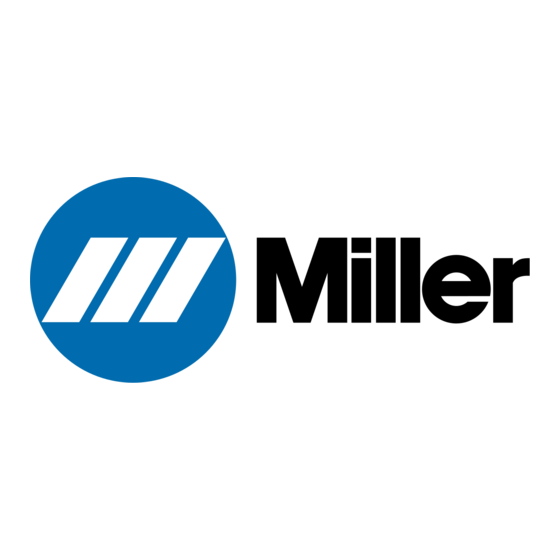Miller Pro-Hobby Series Manuale - Pagina 3
Sfoglia online o scarica il pdf Manuale per Accessori per moto Miller Pro-Hobby Series. Miller Pro-Hobby Series 20. Auto-darkening helmets

SECTION 1 − SAFETY PRECAUTIONS −
Y Warning: Protect yourself and others from injury — read and follow these precautions.
1-1. Symbol Usage
Means Warning! Watch Out!
There are possible hazards with
this procedure! The possible
hazards are shown in the ad-
joining symbols.
Y Marks a special safety message.
.
Means "Note"; not safety related.
1-2. Hazards
ARC RAYS can burn eyes and skin.
Arc rays from the welding process produce intense visible and invisible (ultravio-
let and infrared) rays that can burn eyes and skin. Sparks fly off from the weld.
D Wear a welding helmet fitted with a proper shade of filter to protect your
D Wear approved safety glasses with side shields under your helmet.
D Use protective screens or barriers to protect others from flash and glare;
D Wear protective clothing made from durable, flame-resistant material
WELDING HELMETS do not provide unlimited eye, ear and
face protection.
D Use impact resistant safety spectacles or goggles and ear protection at all
D Do not use this helmet while working with or around explosives or
D Do not weld in the overhead position while using this helmet.
D Inspect the auto-lens frequently. Immediately replace any scratched,
NOISE can damage hearing.
Noise from some processes or equipment can damage hearing.
D Wear approved ear protection if noise level is high.
READ BEFORE USING
face and eyes when welding or watching (see ANSI Z49.1 and Z87.1 listed
in Safety Standards). Refer to Shade and Sensitivity charts in Sections 3-4
and 3-5.
warn others not to watch the arc.
(leather and wool) and foot protection.
times when using this welding helmet.
corrosive liquids.
cracked, or pitted cover lenses or auto-lenses.
This group of symbols means Warning! Watch
Out! possible ELECTRIC SHOCK, MOVING
PARTS, and HOT PARTS hazards. Consult sym-
bols and related instructions below for necessary
actions to avoid the hazards.
OM-231 425 Page 1
